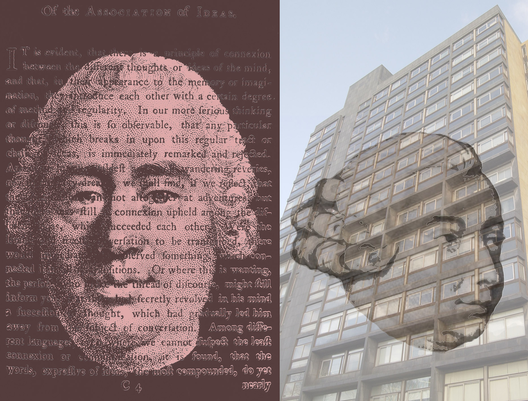David Hume1711–1776
Hume stands in the empiricist line of philosophers from Locke through Berkeley, and he rejected the rationalist notions of cause and effect in favour of scepticism. Hume proposed that while events occur in sequence the perception of causality is a consequence of repeated mental associations between contiguous impressions, and the true nature of causality could never be known - hence he is often referred to as the sceptical philosopher. While he accepted that all experience derives from the senses, he did not make appeal to a higher perceiver, as Berkeley had; rather he considered that external reality is unknowable. Hume was born and died in Edinburgh, though he spent much of his life in England and France. It was during his first visit to France that he wrote his celebrated Treatise of Human Nature (published anonymously in 1739 and under his own name in 1740), laying the ground for a "science of man" based on observation and experiment; he followed this eight years later with a shorter version entitled An Enquiry Concerning Human Understanding. Hume's science was modelled more closely on Bacon's inductive than on Newton's deductive approach, and he did much to foster a realization that all areas of human endeavour require an understanding of human nature. Hume placed great emphasis on the association of ideas and, despite its origins in Greek philosophy, he considered it to be his most important contribution to establishing a science of the mind; it has had a profound impact on psychology, particularly on behaviourism. Hume referred to it initially as the connexion of ideas, but in the text presented opposite he used the term association of ideas, as had Locke earlier. On the page following that reproduced he states that the three principles of association are resemblence, contiguity in time or place, and cause and effect. Contiguity refers to the likelihood of remembering experiences that occurred frequently together; the sight of a glass of beer can evoke its bitter taste. Association by cause and effect was considered to be the most important; events that occur in sequence, and may appear to be causally related, are recalled together. The stone thrown in the water is linked with the ripples it sets in train. The example he gives of association by resemblence is that "A picture naturally leads our thoughts to the original". The original in the case of the portrait on the left was an engraving by William Holl which in its turn was after a painting by Allan Ramsay. On the right, he is shown with the Hume Tower which houses the department of philosophy at Edinburgh University.
